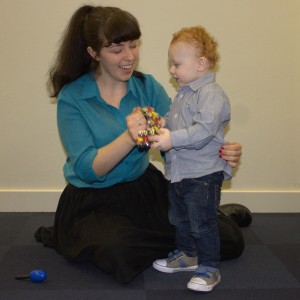 My child does not seem to listen to me. What could be the problem? There are lots of reasons why your child may not seem to be listening to you. Often as parents we think our child is choosing not to listen but there are other things we should think about first, before deciding that it is “just behaviour”.
My child does not seem to listen to me. What could be the problem? There are lots of reasons why your child may not seem to be listening to you. Often as parents we think our child is choosing not to listen but there are other things we should think about first, before deciding that it is “just behaviour”.
The first thing to consider is whether your child is hearing properly. If your child has not had a thorough hearing test by a child audiologist this is a good idea. It is especially important if your child has had a number of ear infections either recently or in the past. Even mild undiagnosed hearing problems can effect a child’s development, learning and school progress so do check this out if you are concerned.
If your child has a hearing impairment they would benefit from speech pathology support.
All children can benefit from support to develop good listening skills. How do I help my child to listen better?
Developing good listening skills enables children to listen to their environment and learn from it. Good listening skills are developed with practice over time and ensure children have the best chance of learning in the classroom environment. The ability to listen and clearly hear and interpret sounds is particularly important as children learn to both understand and use verbal communication. Learning to listen should begin when children are young.
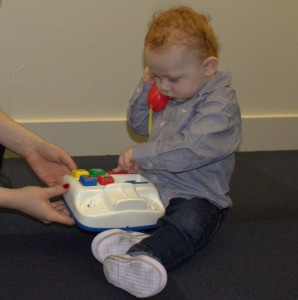 To help your child develop good listening skills, try these ideas:
To help your child develop good listening skills, try these ideas:
- Play a listening game. Sit quietly and take turns to identify sounds you can hear e.g. taps dripping, clocks ticking, birds in the trees.
- Make a scrap book. Cut out pictures you find in magazines and stick them into a scrapbook, talking about the noise they make. See if you can hear and find these things around the house.
- Play with toys, making noise as you play. Encourage your child to listen and imitate the noises. As your child’s skills improve, hide a toy behind your back and see if your child can identify the toy from the noise you make.
- Experience lots of sounds. Give your child plenty of opportunity to experience sounds and talk to your child about the sounds you hear.
- Listen to music. Use music as a fun activity for developing listening. Listen to music on CD but also make your own with either bought or home made musical instruments.
- Model good listening behaviours by being a good listener yourself. Get down face to face with your child when they speak to you. If you don't have time to listen straight away let them know you are busy and follow up later when you have time to give them your full attention.
- Explicitly teach good listening behaviours. Talk about what makes a good listener and how you know when someone is listening to you. Praise your child when they show good listening behaviours by telling them exactly what they are doing well. e.g. “I can tell you are listening carefully because you are looking at me and thinking about what I’m saying”
- Consider the listening environment and turn off TV or move to a quiet place to have a conversation.
- Check your child has correctly understood your message by asking them to repeat back to you what you have said to them. Encourage your child to ask for clarification when needed.
- Encourage your child to monitor their own ability to listen and concentrate such as by moving to a quiet spot or turning off background noise when they do quiet activities with you such as listening to a story.
There is more information about listening to download from Our website.
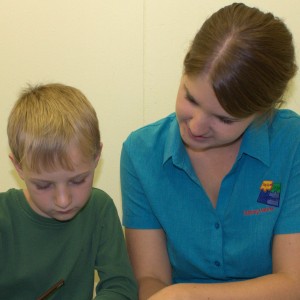 If your child is hearing well but seems not to understand or remember what is said to them they may have a language difficulty, particularly in the area of comprehension. This can be assessed by a speech pathologist who can then offer therapy and support to develop your child's language skills.
If your child is hearing well but seems not to understand or remember what is said to them they may have a language difficulty, particularly in the area of comprehension. This can be assessed by a speech pathologist who can then offer therapy and support to develop your child's language skills.
To learn more about this topic including download some free information sheets from Our website.
What is comprehension or receptive language? Language is used as a means of communicating. Speech pathologists will often classify language into receptive language and expressive language. This is because communication is a two way process.
It involves an ability to understand a message (receptive) and to send a message to another person (expressive).
What is receptive language? Receptive language refers to the ability to understand spoken language. Children will understand many more words than they will be able to use and this is often referred to a receptive vocabulary. Help build your child’s receptive vocabulary by exposing them to lots of new words.
Receptive language develops before expressive language. For a child to be able to communicate and learn, they need to be able to understand spoken language. A child will have difficulty talking or responding to a question if they are unable to understand what has been said. For this reason, it is important that a child is given the opportunity to develop their receptive language skills before focusing on their expressive skills. Providing a child with a language rich environment is the best way to develop a child’s receptive language.
Just because a child cannot say a word yet, doesn’t mean that the word isn’t in their receptive vocabulary! Every time a child hears a word they become more familiar with what it means and this will eventually result in the use of the word expressively. Developing the skills to understand language takes time, but this is an important skill for a child to learn in becoming a competent communicator.
How to make a task receptive, rather than expressive:
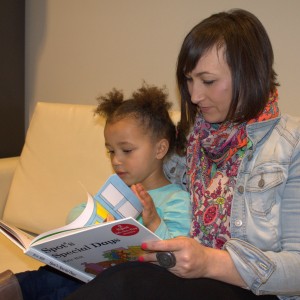 Reading a book to your child
Reading a book to your child
- Encourage them to open the book and turn the pages – “Time to turn the page!”
- Ask them to find objects from the book around the house – “There is a television in this book! Can you point to our television?”
- Use books and encourage them to look for the things you say – “Can you find the pig? Look behind the door, he is hiding!”
- Photocopy pictures from the book and get them to blue tak them into the book as you read it – “we need to find a cow!”
Ask your child to point to or pick up an object rather than naming it:
- Put an array of toys or objects on a tray and ask them to find one
- Place objects in a bag and ask them to pull out a toy as you name it for them
- Ask them to point to all the blue puzzle pieces or point to all the dogs in the book
Play a game giving them instructions to follow:
- Have an array of toys or pictures and ask them to pick up a particular one and put it on a picture or in a toy house or on a car mat – “Put the car on the bridge!”
- Increase the complexity of instructions for them to follow i.e. “Put the dinosaur on the tree!” “Put the red dinosaur on the tree” “Put the red and green dinosaur on the tree”
- Use barrier games for older children to develop listening and comprehension
- Use lotto boards to target different vocabulary for younger children "find a ..."
- Play a game with instructions for them to follow such as "Simon says"
- Use toys such as Mr Potato-heads to follow instructions "put on the yellow hat"
Talk to your child when you are playing with toys together:
- Talk to them about what they are doing i.e. “You are feeding teddy! Teddy is hungry. Yum-yum, Teddy is eating the apple.”
- Avoid asking lots of questions, rather comment on what you or your child is doing.
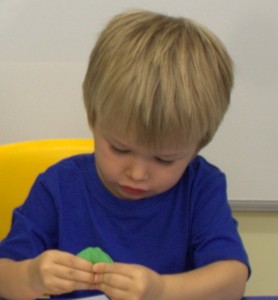 Concept words are important for children to use and to understand so that they can follow instructions accurately and pass information on clearly and specifically. They are also important for success later on in subjects such as maths and science.
Concept words are important for children to use and to understand so that they can follow instructions accurately and pass information on clearly and specifically. They are also important for success later on in subjects such as maths and science.
Concepts include:
Position concepts
- 2 to 3 years: on, off, in, out, up, down, under, top, open, shut
- 3 to 4 years: bottom, behind, first, near
- 4 1/2 years: middle, around, away from, between, through, next to, beside, last
- 4 1/2 to 5 years: in front, in a line, corner
Size concepts
- 2 to 3 years: big, small/little, long
- 3 to 4 years: short (length and height)
- 4 ½ years: tall, fat
- 4 ½ to 5 years: thin
Quantity
- 2 to 3 years: one, two
- 3 to 4 years: three, every, none
- 4 ½ years: four, most, few
- 4 1/2 to 5 years: five, pair
Other concepts
- 2 to 3 years: stop, start, loud, quiet, heavy, soft, fast
- 3 to four years: hard, slow, light(weight)
- 4 to 5 years: same, different
Learning Concepts:
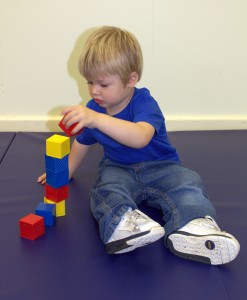
Learning to use concept words in real situations:
1. Model the words as they occur in your child’s real life experiences,for example, “you are getting in the bath, you are climbing over the fence, put on your blue shirt, find your big teddy”. etc.
2. Talk about these words as your child observes other people in kindergarten, on television and books. “Look, Sam has a red shirt, Jack is climbing over the log, Caitlin has the little pencil.”
3. Play games asking your child to place the objects in the position you ask, “put the car in the box, put the biscuit on the blue plate.”
4. When your child can do these activities with you in a game, see if they can follow instructions in everyday activities. For example “Put your drink bottle in your bag”. Begin with logical positions but try later illogical ones to encourage them to listen carefully, for example, “put your drink bottle under your bag”.
6. Playgrounds and kindergym are good places to model concept words as your child moves in, over, under and through the equipment. You could also make an indoor obstacle course with chairs, tables, boxes and blankets.
7. Books about concepts such as colours, shapes and numbers as well as flap books such as “spot books” are often good for talking about concept words.
8. Barrier games are also good for working on position words. With a screen between yourself and your child take it in turns to describe what you are creating on the other side of the screen, so the other person can copy, eg: building with blocks, setting up farm yard, placing pictures onto a scene etc. Each person must have the same items on each side of the screen. If the instructions were correct the creation on each side of the screen should be the same when the screen is removed. There is more information about barrier games in previous blog entries.
Auditory memory is the ability to hold in your memory, in correct sequence, things you hear, long enough to process the information. Children who have difficulty with auditory memory have difficulty with following instructions, recalling and retaining information, learning new concepts and understanding what is read to them. They often have difficulty later on with developing literacy skills.
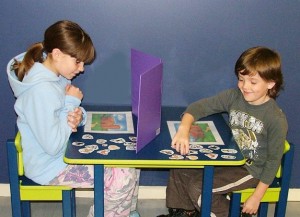
Some activities to help preschool children develop auditory memory include the following:
With all the activities ask your child to look at you and listen carefully. Start simple so your child will be successful then gradually add more things for your child to remember.
1. Play word games such as “I went to the shop and I bought…..” Each player repeats the items from the previous player and adds a new item to the list. You could also try “I went to the zoo, farm, beach…..”. For older children try adding words in alphabetical order, e.g. I went to the shop and I bought an apple, a banana, a cake, a donut….”
2. Give your child messages to pass to others. “Tell your sister to bring me her blue socks”. ”Call Dad and ask him to buy eggs and milk on the way home”. “Ask Grandma would she like to come to dinner on Saturday at 12 o’clock”.
3. Make your own sound shakers by filling small empty plastic juice bottles with things such as rice, pasta and sand to make different sounds when shaken. Take turns to close your eyes and listen when they are shaken and find the right one. Next do two or three sounds in sequence and see if your child can copy your pattern.
4. Make an obstacle course around your house or yard or in the park and give your child instructions to remember and follow. Start with two or three steps and make the instructions gradually longer.
5. Follow instructions using farm animals and blocks. “Make the cow jump over the small fence. Make the dog stand on the blue block”.
6. Use a car mat or draw your own roads with chalk and follow instructions. “Drive the blue car past the tree to the petrol station. Park the red car near the biggest bridge”.
7. Make a collage by cutting out pictures from magazines or junk mail and give your child instructions to follow to paste them and make a picture. “put the cat under the tree”.
8. Use coloured and shaped beads and give your child instructions to follow. “Thread a blue circle, then a red square”. Try stacking blocks or building with lego in the same way.
9. Ask your child to listen to a story. Read two or three sentences at a time then ask your child a who, what or where question about what you have read. ”What was the boy’s name?” ”Where was he going?”
The ideas in this blog are not a replace designed to support families of children with age appropriate skills and those receiving therapy. It is not a replacement for professional support for children with developmental challenges.
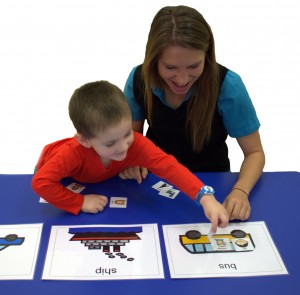 If you are concerned about your child's ability to listen, follow instructions or understand what they hear a speech pathology assessment will help you find out how your child compares to others of the same age and give you strategies to help your child. For more information browse our website.
If you are concerned about your child's ability to listen, follow instructions or understand what they hear a speech pathology assessment will help you find out how your child compares to others of the same age and give you strategies to help your child. For more information browse our website.
To find out more about how the Talking Matters team can help your child click here. We provide speech pathology, occupational therapy and psychology services to children with a range of needs including autism spectrum disorders.
To find out more about Talking Matters visit us on our website, Facebook page, Twitter, or Pinterest. If you live in Adelaide and would like to discuss how Talking Matters can help your child call our friendly office staff on 08 (08) 8255 7137.
Jo Brenecki
Speech pathologist
Related Blog Posts
If you liked this post you may also like:
Questions for preschool
Answering Questions
Let's communicate!
Using OPERATION To Grow



